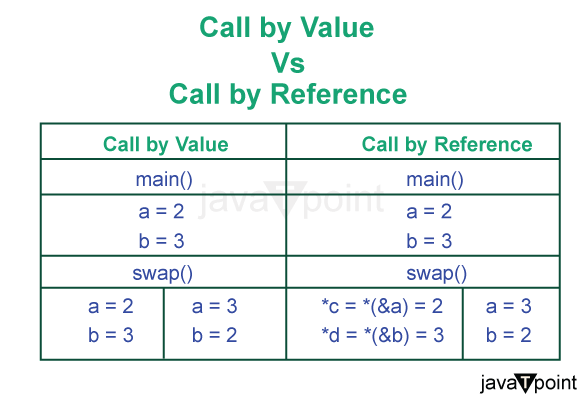Parameter Passing Techniques in Java with ExamplesParameter passing in Java refers to the mechanism of transferring data between methods or functions. Java supports two types of parameters passing techniques
Understanding these techniques is essential for effectively utilizing method parameters in Java. 
Types of Parameters:1. Formal Parameter:A variable and its corresponding data type are referred to as formal parameters when they exist in the definition or prototype of a function or method. As soon as the function or method is called and it serves as a placeholder for an argument that will be supplied. The function or method performs calculations or actions using the formal parameter. Syntax: In the above syntax:
2. Actual Parameter:The value or expression that corresponds to a formal parameter and is supplied to a function or method during a function or method call is referred to as an actual parameter is also known as an argument. It offers the real information or value that the method or function will work with. Syntax: functionName(argument) In the above syntax:
1. Call-by-Value:In Call-by-value the copy of the value of the actual parameter is passed to the formal parameter of the method. Any of the modifications made to the formal parameter within the method do not affect the actual parameter. ALGORITHM: Step 1: Create a class named CallByValueExample. Step 2: Inside the main method: Step 2.1: Declare an integer variable num and assign it the value 10. Step 2.2: Print the value of num before calling the method. Step 2.3: Call the modifyValue method, passing num as the actual parameter. Step 2.4: Print the value of num after calling the method. Step 3: Define the modifyValue method that takes an integer parameter value: Step 3.1: Modify the formal parameter value by assigning it the value 20. Step 3.2: Print the value of value inside the method. Implementation: The implementation of the above steps given below FileName: CallByValueExample.java Output: Before calling method: 10 Inside method: 20 After calling method: 10 Complexity Analysis: Time Complexity is O(1). Space Complexity is O(1). Call-by-Reference:call by reference" is a method of passing arguments to functions or methods where the memory address (or reference) of the variable is passed rather than the value itself. This means that changes made to the formal parameter within the function affect the actual parameter in the calling environment. In "call by reference," when a reference to a variable is passed, any modifications made to the parameter inside the function are transmitted back to the caller. This is because the formal parameter receives a reference (or pointer) to the actual data. ALGORITHM:Step 1: Start Step 2: Define the class "CallByReference" Step 2.1: Declare instance variables: a (int) and b (int) Step 2.1: Define a constructor to assign values to a and b Step 3: Define the method "changeValue" inside the "CallByReference" class: Step 3.1: Accept a parameter of type "CallByReference" called "obj" Step 3.2: Add 10 to the value of "obj.a" Step 3.3: Add 20 to the value of "obj.b" Step 4: Define the class "Main" Step 4.1: Define the main method Step 4.2: Create an instance of "CallByReference" called "object" with values 10 and 20 Step 4.3: Print the values of "object.a" and "object.b" Step 4.4: Call the "changeValue" method on "object" and pass "object" as an argument Step 4.5: Print the updated values of "object.a" and "object.b" Step 5: End Implementation:The implementation of the above steps given below FileName: CallByReferenceExample.java Output: Value of a: 10 & b: 20 Value of a: 20 & b: 40 Complexity Analysis: Time Complexity is O(1). Space Complexity is O(1). |
 For Videos Join Our Youtube Channel: Join Now
For Videos Join Our Youtube Channel: Join Now
Feedback
- Send your Feedback to [email protected]
Help Others, Please Share










